UP TO THE MINUTE
Adrienne Malek & Jan Bagnall - Fighting Fire with Coatings - PODCAST TRANSCRIPT
July 10, 2025 at 2:00 p.m.Editor's note: The following is the transcript of a live interview with Adrienne Malek and Jan Bagnall from Pli-Dek. You can read the interview below, listen to the podcast or watch the recording.
Intro: Welcome to CoatingsCast, the ultimate podcast dedicated to the science, art and innovation of liquid and fluid applied roofing, coatings for surfaces and waterproofing. It's time to roll up our sleeves, put on our lab coats and dive headfirst into the world of liquid protection that keeps your roofs and surfaces in prime condition. The future is here and it's liquid, so don't miss out. This is CoatingsCast, where every drop counts in the world of roof and service protection.
Megan Ellsworth: Hello, everyone. Welcome to CoatingsCast. My name is Megan Ellsworth here at CoatingsCoffeeShop.com. And I'm really excited today because we're talking about the new WUI regulations. That's the Wildland Urban Interface regulations. And we're here with Pli-Dek. So, hello. Hello, how are you?
Jan Bagnall: Hello, Megan. It's wonderful to be back here with you guys again. I missed you guys. We are also joined with our head person in our company, is Adrienne Malek.
Megan Ellsworth: Yes, we have Jan and Adrienne here. So, Adrienne, why don't we start have you introduce yourself, tell us a little bit about you.
Adrienne Malek: Hi, my name is Adrienne Malek. I am currently the VP of product management for cementitious coatings, which includes Pli-Dek. And I have had the opportunity to be part of the Pli-Dek family now almost 13 years. So, very excited to be here and get to talk about the product with you.
Megan Ellsworth: Wow, that's amazing. Okay, Jan, introduce yourself.
Jan Bagnall: All right, well, I've been around a little bit longer than Adrienne. I don't know if you can tell that, but it's been 46 years with me. I'm the guy that invented Pli-Dek back in 1979 and I've been here ever since. It's part of my baby and I don't think I'm ever going to retire. So, currently, I'm a consultant for Pli-Dek. I do a lot of seminars for architects and consultants and applicators and builders. That's my job to make sure everything is installed right and product development, as well as testing, as well as writing specs and details for different jobs and stuff. So, that's what I do now.
Megan Ellsworth: Wow, amazing. Well, I'm really excited to have the inventor here chatting with us and the head boss in charge. So, let's dive right in and talk about what trends in fire safety you both are seeing right now in the decking and coatings industries. And can you also explain what WUI zones are?
Adrienne Malek: So, WUI is defined as you had stated, Megan, as Wildland Urban Interface. What this is, is it's where our residential and commercial communities hit natural reserves, forested areas, et cetera. It's where the interface between nature and man happen. So, what it has done and as even the world has heard over the years is our fire seasons continue to get even more severe and especially within California. And so, as the destruction has increased because our urban population has continued to increase more homes, people also wanting to live, let's call it out of the city if you will, they want to be out into nature, they want to be off the grid, we're seeing more and more residential and commercial buildings that are destroyed or have gotten damaged. So, they have created a map that has now been in existence for a while that rates the severity of the fire zones based off of literally an address, but based off of what took place in January of this year and the horrific fires that happened in LA County and the Palisades. Governor Newsom is now expanding those zones.
Adrienne Malek: So, certain areas that would've been rated as moderate or high, may now be severe. So, they're going to continue to release maps county by county throughout California until they feel that they have this covered. It's not just due you back up to a forest. It also is related to weather concerns or issues. What is the severity of the wind that comes through your area? So, if the fire sparks, how bad could this be for you? Things of that nature to or all taken into consideration when they're planning these fire zones. And we're now seeing states outside of California starting to adopt it as well, just as a precaution or better to be safe than sorry, type of atmosphere going on. So, Bagnall has invented a product back in 1979 that met certain fire criterias already. So, Bagnall, if you want to jump into your class A one hour and now the extended E84 that got us the WUI listing, that would be awesome.
Jan Bagnall: Well, we started back in 1979, there was two ASTM tests that you needed to take. And one was for a one-hour rating. And the one hour rating burns underneath the decking system that you're putting your roofing or your decking system. So, it has to be softened with either stucco or drywall. And over living space, it would be drywall. That would pass your one hour, which is called ASTM E119. The class A, which burns from the top side of the assembly is called the ASTM E108. That involves three different tests that you have to take. One's a spread of flame and an intermittent flame and a burning brand. The burning brand is pretty intense. So, for years and years we've had that rating, which was the top of the chain. The food chain is what we had as that.
Jan Bagnall: But then in 2008, the state fire marshal decided to have a high fire zone test taken. In 2012, they started implementing with decking systems. So, since 2012, we've had requirement to have a high fire zone rating as well, which involved a test called ASTM E84. So, that's where the new one that we've had since 2012. So, we're talking 13 years now that we've had that rating. A lot of guys failed to comply and they were getting around it and some guys were getting kicked off job sites.
Jan Bagnall: So, Pli-Dek has always been the pioneer in making sure testing is done right and giving it to the architects to make sure that they're covered. We had our WUI currently listed under their website right now. The category that we're listed in their directory is under 8110. We're 2327 is our specific number. So, you'll find us there. And then, you're required when you have this test now, that you have to have that on your labeling of your product, either it's on a product that's made or you haven't put it on a bucket or a bag. It has to be listed as a WUI approved.
Megan Ellsworth: And I think that what a cool badge to put on your products.
Adrienne Malek: Absolutely.
Megan Ellsworth: What a sense of pride that yes, my product is protecting these homes or protecting these areas, these commercial buildings from potential fire damage.
Adrienne Malek: And the nice thing from a consumer perspective, if you look at it like even being homeowners ourselves or renters, is in order to keep compliance with this, we have to have quarterly inspections. So, those people that turn around and decide to use our product at any time, know that we have surprise or scheduled inspections that take place every quarter that makes sure what we tested our system with has not changed. It's still the exact same product. There's nothing going on there and they can feel assured each year in every quarter that this continues to take place as well.
Megan Ellsworth: Yeah. Yeah, that's huge. So, okay, going back, what are some trends you see moving forward with these fire ratings and especially in the decking and coatings industry? What do you see going here on out?
Adrienne Malek: I would say Jan and please correct me if you think that I'm going off the rails here, but I think that it's going to be trying to move in as much as possible to non-combustible. Some of the peel and sticks that we've seen before. All of these things are going to become a thing of the past, especially with, once again, how continuous and destructive we're seeing this going on. Nobody's going to be able to sneak past things anymore, if you will.
Adrienne Malek: So, I feel like they're going to, why not take the road of least resistance, which means anything that we know that doesn't even meet the basic criteria of a class A or one hour should never be allowed. And then making everything have to pass the WUI moving forward, even if it's not in a high or severe spire zone. If I'm a builder, why would I not want to turn around and do the best of what's available in the market to not have to worry about any of those restrictions later? So, I think from our perspective, Bagnall, from a waterproofing system, cementitious is going to be the way that they're going to continue to move forward or it's going to be alternative products. I just think some of the other tried and true or go-tos that they've had for all of these years now are just going to be going by the wayside within areas where this is a concern.
Jan Bagnall: Back in the day, I started as a roofer, as a young kid and they used to have wood shakes and then wood shingles and nobody cared. Just you can look where we're at today and they don't see any kind of roofs that have wood shakes on them anymore. But the fire codes, keep getting stricter and stricter. And unfortunately, it took them a while to get to where we're at now because a lot of people have lost their homes. And even the Pacific Palisades, we have the two big, big fires. We had this last year in southern California where Pacific Palisades and Altadena where 30 people actually died. We had 30 people that they lost 6,822 structures.
Jan Bagnall: So, it's not a small problem. It's not something you can brush under the rug. You got to look at this thing and say, hey, this is what we're here for. Building and safety is what the building departments are responsible for. And when they see something that's unsafe, they're now doing their best to say, "We got to do the right thing." And this also meets with architects and consultants. I mean, as an architect, you always want to write in the plans the right specification because they have liability too when they don't cover themselves with certain criteria and certain approvals that they have to have. So, we're trying to make it good for everybody, not just for Pli-Dek, but for safety and for the building departments and the builders to do the right thing.
Adrienne Malek: And some of what I think is now making it easier. Some of the trends, to your point, Megan, is you need to make a quick option for people to understand. So, building material listing based off of the California state fire marshal, them having a website that someone can easily go to and look up, to Bagnall's point, the 8110 category for decking and see who's approved. There's no he said, she said or , "I thought I was doing it because so-and-so told me." It's they're now making it, if you have to meet the stringent criteria or you want to exceed what your requirements are from a building perspective, but you don't know where to start, they've now made it super simple. Go on the website, see it tells you who's active, who's renewed, what systems are approved, which ones aren't. So, it takes a lot of the guessing work out of it. So, to Jan's point, if I'm a consultant or an architect, I know if I see this product and this manufacturer listed here, I'm safe if I put it into my spec.
Megan Ellsworth: Yeah, that is so important. Like you said, ease of use, ease of finding that information and clear... what's the word? Oh, man.
Adrienne Malek: Almost like rules and regulations, right?
Megan Ellsworth: Yes. Yes.
Adrienne Malek: There's no guessing involved. Yeah.
Megan Ellsworth: Yes. There's no guessing involved. And the builders, the homeowners, the building owners, everyone knows that these are the products we need to use. Because like you said to your earlier point too, why not have everything class A fire rated?
Adrienne Malek: That's the whole thing. Yeah.
Megan Ellsworth: Yeah, exactly. Why not?
Adrienne Malek: The importance of these two from a consumer perspective or being the occupant of these buildings is the one hour allows me and is supposed to allow me one hour to get out of the building before it starts to spread to a point. And then, Bagnall, you've also got that. So, the spread of flame, then you've got the smoke. You have to meet a certain criteria so that you can still actively be able to, from a safe perspective, get out of the zone. Obviously the first thing you do when something gets on fire is you get out as quickly as possible, right?
Megan Ellsworth: Yeah.
Adrienne Malek: But if something is prohibiting you from doing so, this allows me to know from a safety perspective that I have X period of time to get out or I know that I built this to the best standard to make sure that these multifamily residences, especially condos and apartment complexes, these people are given the best opportunity to be able to get out. A majority of the deaths that Bagnall talked about, they said happened during people trying to evacuate or waiting too long to evacuate, right?
Megan Ellsworth: Yeah. Yeah.
Jan Bagnall: So, you think decks, you think balconies and roof decks maybe, but there's also walkways. So, you walk up the stairway and then there's a walkway that goes around the entire building. And like Adrienne said, all of a sudden you find out there's a fire, your fire alarms going off, you open your front door. And if your decks on fire, what do you do? You start jumping out windows and stuff. So, you have to have that assembly one hour rated so people can... and class A. You don't want the material on fire. You don't want the fire to come up and burn through the deck and it's on fire. You can't walk out to the stairway or to the elevator. But in most cases it would be a stairway. But you definitely want something that's going to give the people some time to get out and get away from the fire.
Megan Ellsworth: Yeah. So, you're mentioning this one hour test and can you break that down compared to the 30-minute ASTM E84 fire requirement and what the differences are? I guess just time.
Jan Bagnall: Well, we were introduced to this by some of the architects asking us about this WUI and we didn't quite understand it because we figured we had the class A in a one hour and we already had everybody covered. And then we found out about a 10-minute test on a couple of the big, big projects that we had that we went out and got this test taken and passed. Then a couple years later, they decided that unbeknownst to even maybe the state fire marshal when I called them up in California here, that I went to a 30-minute test and going, who decided that? So or iginally I guess the 10-minute test wasn't good enough, so we came back and took the 30-minute test as well and passed that, which is a little bit more difficult to do. I don't know why they decided to upgrade it, but when you talk about fire, any kind of an upgrade is always a smart thing to do. So, hopefully-
Adrienne Malek: And when we talk about the one-hour ASTM test too, Megan, there's a misconception there that we're burning for one hour. It's a calculated math. So, when we take that ASTM test, there's a certain time period that we're doing it, to Bagnall's point, either from the bottom up or the top down from a burn testing perspective. Then they do a math calculation. Now, what they've done with the E84 is they used to do that calculation on a ten-minute period only. They said, that's no longer good enough. We now want to see you stay consistent for X time period. They extended now the 30-minute test. If you can't keep that, it's no longer a calculation. So, they're making more stringent. We're not going to continue to just go by a calculated risk factor. What we're going to do is say, "We want to increase the time we see you in the burn chamber to see how your product performs. Then we'll turn around and do the math calculation afterwards." So, the actual time that you're in the burn chamber itself has now been extended.
Megan Ellsworth: Okay. So, it was 10 minutes and now it's 30?
Adrienne Malek: Correct. There's those type of expansions that have taken place.
Megan Ellsworth: Got it.
Adrienne Malek: Right?
Megan Ellsworth: Yeah. And I mean like Jan you said, I mean that's a great thing to keep preventing these just devastating fires, like the Pacific Palisades one. So, what challenges do you see contractors face when they're trying to meet these new stricter fire codes?
Adrienne Malek: Not knowing who is an approved manufacturer and what system to install. That's the first [inaudible 00:16:03], because I think Bagnall gets a ton of calls where all of a sudden they've been kicked out of permits plan or a consultant showed up on a job, shut the job site down. They thought that they were doing what they were supposed to do. There was some type of discussion that took place and they thought that they met the current building code criteria for wherever this was going on. That's why it's so important that they go and do the research, check it on the website to make sure. But especially as the fire zones continue to expand now over this next year, I see that as the first obstacle that they should be trying to be proactive on. Before I get out to the job site and I order my product, let me just go ahead and check to make sure that this is compliant. If it's not, start the discussion then versus getting caught halfway through installations or halfway through a project.
Megan Ellsworth: Yeah.
Jan Bagnall: So, you look at back in the day, the governing body that had all the codes and compliances that they enforced called ICBO. That has since changed to ICC. So, you look at the whole premise of ICC governs the codes and everything seems to be important. I mean, we do different tests with free saw, with accelerated aging, with perm rate. So, many different ASTM you take, but the most important one out of all those is going to be the fire test. The other ones you're not going to die of. You're just going to get mold and mildew and maybe some deterioration of the decking system. But in fire, it's life or death. So, there's always a governing body that has all the different codes you have to comply with.
Jan Bagnall: And what Adrienne says is true. It's educating everybody, architects, consultants, builders, what they need to pass or what they need to have as an approved system in order to put it in their assembly. So, that's important. So, this is going to become more important because obviously the fires are headlines for months and months out here in California. And it's not just this one year. I mean, we had in Napa Valley a few years back, it was crazy where they had even more people died and more people lost their homes. So, it's not just a one-time thing that it's changing the codes. Pacific Palisades was on fire. It happens every year. So, the more we become educated, the better and more safe we're going to be.
Megan Ellsworth: Yeah, I mean, I grew up in central Oregon where, I mean, there's wildfires every summer. And now I live in Colorado where there's wildfires every summer. And I've traveled to California a lot where there's wildfires year round. And yeah, it's heartbreaking. So, the most we can do to prevent that, let's do it.
Adrienne Malek: Exactly. And this is only going to get worse because we're building more. We have housing issue and housing crisis in California specifically. I'm sure it's prevalent in other places. Too many people and not enough homes or residential type capacities. And so, the only thing we can do is continue to encroach in on the available space or into these wildlife areas. So, the more that happens or the closer we get building to building, the more likely it is for a quick spread of [inaudible 00:19:30].
Megan Ellsworth: Spread. Okay.
Adrienne Malek: So, if you can focus on the best non-combustible, non-flammable, those types of products or those that give you the longest time period from workability, because then maybe you can get the fire out, those happen. And so, some of these ratings are important not because of thinking that the structure that our system is on is the one that caught on fire. We're concerned about the embers that spread these fires over thousands of acres sitting on a deck and catching it on fire. So, it's also to allow first responders to try to get there and mitigate what's going on, too.
Megan Ellsworth: Yeah, absolutely. So, I had love to know how the Pli-Dek F system specifically meets this code and why is it such a strong fit for WUI jobs?
Adrienne Malek: Bagnall invented a system that has been tried and true now since the end of the 1970s, that when these robust requirements came in from the state of California fire marshal to meet the residential building code, we were able to take an existing system that has been installed in the market now for over 40 years, put it through this testing and pass. So, the nice thing is about the F system is the F system as designed and installed per specification, meets all of those extended requirements. There's no alternative spec, there's no adjustment. If you've already been installing Pli-Dek all of these years, you continue to install the F system the same way you did in 1990 and it still meets the updated criteria. Bagnall can go into more of the robustness we have. He's invented a multi-layered system that allows it to not only be one of the best waterproofing systems in the market, but now it also meets some of the most stringent residential building code requirements as well.
Megan Ellsworth: That's awesome. Jan, do you want to give us the nitty-gritty on the F system?
Jan Bagnall: Well, the F system involves a polymer cement that we put down early in construction. So, right after framing is done, the contractor that we've trained is going to install sheet metal flashing around the perimeter at doors and walls to decks and drip edge flashing post. We opened up plywood seams to allow for expansion and contraction. And then we install a expandable lathing, which is a 2.5 grade G60 with a polymer cement, which is over 6,000 PSI. So, it's as durable as you could be. So, there's your fire rating right there. And then we put non-combustible products on top of that, which is so fiberglass and resins, some other polymer cements that create textures. Then we have a colored sealer, which they're all water-based products. Nothing's out there with any type of butyl in there or any type of urethanes in there that would catch on fire. So, we've done our due diligence when we started this product to have something durable, to have something fire rated, to add something you can add slope to, early protection in the application.
Jan Bagnall: It took California by storm. And then it went from California all the way over across the country over there in Florida and everywhere in between. So, educating the industry has been a lifelong project for me that I've had to talk to thousands of architects and thousands of builders and thousands of applicators that I've trained to learn. And exactly what Adrienne said earlier, I was an applicator. When I started this product, it was for me. I had 130 guys installing product and I was thinking that's all I wanted to do, was install the product. But next thing I know, we got specified so much because we had all these approvals that we took that nobody else had, that all the architects started spec. And I was like, oh, I can't do every single job in California. So, we started training other people to do it. And then I had to get out of the application business because I was running into the same guys I was selling product to.
Megan Ellsworth: Got it.
Jan Bagnall: Unfortunately, I'm a big installer. I loved installing it and it was very profitable for me. But I ended up getting into Pli-Dek and knowing now that we were going nationwide, took a lot more of my time to be able to travel. But been doing it ever since. So, you've seen me for the last probably 35 years, just training people because I am not an applicator anymore. But I do have a lot of knowledge on the application product, so I do train people in doing that because I'm the guy that got all the bugs out.
Jan Bagnall: But you know what's funny? Is that when we first started the system, there wasn't that many things that we changed since day one. Gapping the plywood was one that we've changed, which was just a little bit better system. But basically everything we tested back in 1979 is holding true today. We did a lot of homework back then to make sure we covered all the bases. And with Pli-Dek, we do. We cover, we talked about free saw and we talked about accelerated aging and perm rating, those type of bond strength and wind uplift ratings. So, when we saw all the different ASTM tests that we had to take to get a certified approval from at the time, ICBO and now it's ICC, we had to take that into consideration when we started inventing a product that needed to what we could do to pass all these different regulations. And so, that's why we invented Pli-Dek the way we did to make it durable, to make it fireproof, to make it water resistant, perm resistant type product. And that's what we've done. We've captured this market by putting a really, really good product out there.
Adrienne Malek: And as Bagnall was stating, education is the key. Education and training. So, whether they're a consultant architect and they want... we are AIA approved and we will do those, we can do those in person or remotely. And then we have regularly scheduled contractor trainings as well.
Jan Bagnall: Amazing.
Adrienne Malek: So, anybody can go to the website, send an email. If they're looking to do it, they can call us on the phone, our contact information is on there. And Bagnall will train them even if there's not something scheduled. So, if there's a need and a want and a desire, we're always going to make sure that we make ourselves available regardless of if it's a contractor to an architect or consultant. We'll do it for everybody in between.
Jan Bagnall: And what also works for architects is we give continuing education points that they have to take all this continuing education classes to make sure they're up-to-date on all the new regulations and stuff. So, that's a good way for the architects. We end up buying them lunch and teaching them for about an hour real quick and getting them up to date on all different codes. And they get continuing education points that Adrienne hands out to them.
Megan Ellsworth: Wow.
Adrienne Malek: And then the contractors are easily able to get the product too, Megan. So, you get trained and you're like, "What do I do next?"
Megan Ellsworth: Yes.
Adrienne Malek: Our technical experts are available to come on the job site with them, so they don't have to feel like they just went to one training and then they're on their own. [inaudible 00:26:02] to the job sites, works with them. And then we're in all major waterproofing distributors. So, if they needed to turn around, most likely if they're already in waterproofing, they probably even have an account set up with these guys. And so, it makes it easy for them to be able to also purchase and access the product as well.
Megan Ellsworth: Yeah, that's huge.
Jan Bagnall: And a lot of times these builders that see roofers, which is our mainstay here in this podcast, that are on a job, this is actually called a waterproof walking roof. That's listed under our ICC report. So, it isn't a roofing category. And for some of the jobs that are out there, the builders like to see the roofers and the decking guys be the same contractor as opposed to two different guys they got to work with.
Megan Ellsworth: Yeah, exactly.
Jan Bagnall: So, it's a really good thing for a roofer to have this as part of the repertoire so they can go to the builder and say, "Hey, we're going to waterproof your regular roost and your walking roost as well." That ends up always getting them more business doing that.
Megan Ellsworth: Yeah, that's a really great point. What a way to diversify your offerings as a business and your portfolio and just create more work and more jobs for you and your crews.
Adrienne Malek: Some of the easiest ways for them to bring in or increase business is to be able to go after an additional spec that's on the project that they're already on.
Megan Ellsworth: Yeah.
Adrienne Malek: Yeah.
Megan Ellsworth: Yeah, absolutely. Well, you two have been absolutely amazing and so informational. This is such an important topic and it's very close to home for me and I'm sure for you two as well with fire safety and everything that's going on with the WUI zone. So, thank you so much for-
Adrienne Malek: And being born and raised in SoCal for both of us as well. Right? [inaudible 00:27:42].
Megan Ellsworth: Wow. That's huge. And what a area that's just so prone to these fires. And same. I just thank you so much for educating me and all of our listeners on what's going on with the WUI zones and how they can keep in front of it and be creating and doing the best work they can that's class A fire resistant. So, thank you for your wisdom today.
Adrienne Malek: Thank you for inviting us. We enjoyed it as well.
Jan Bagnall: Thanks, Megan. It was nice seeing you again.
Megan Ellsworth: Yeah, so true. Likewise. So good to see you both. Everyone out there listening can also go to the Pli-Dek directory on CoatingsCoffeeShop.com to learn more and see where you can purchase in your local area, some Pli-Dek systems. And then also everyone out there, please make sure you subscribe and ring the bell so you get notified every time we post a new episode. And we'll be seeing you next time on the next CoatingsCast.
Outro: Thanks for joining us on this coding adventure. Stay tuned for more episodes. And in the meantime, be sure to follow us on social media to stay updated with all things roof coatings. Until next time, stay coded. For more information, go to CoatingsCoffeeShop.com.
Recommended For You
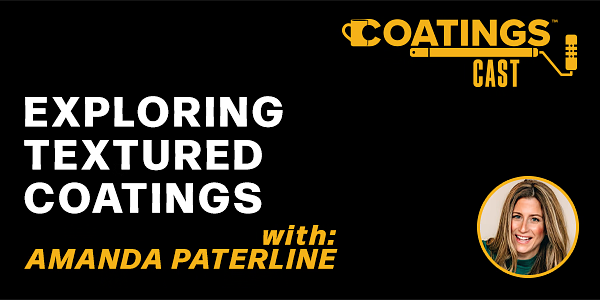
Amanda Paterline - Exploring Textured Coatings - PODCAST TRANSCRIPT
Read More ...
The Power of Proper Training - PODCAST TRANSCRIPT
Read More ...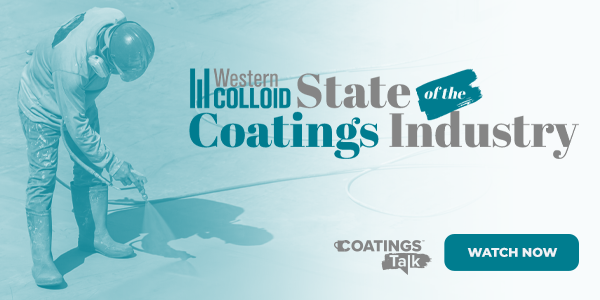
State of the Coatings Industry - PODCAST TRANSCRIPT
Read More ...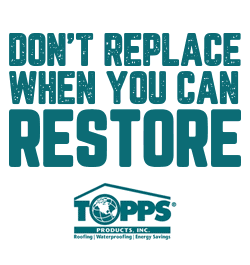







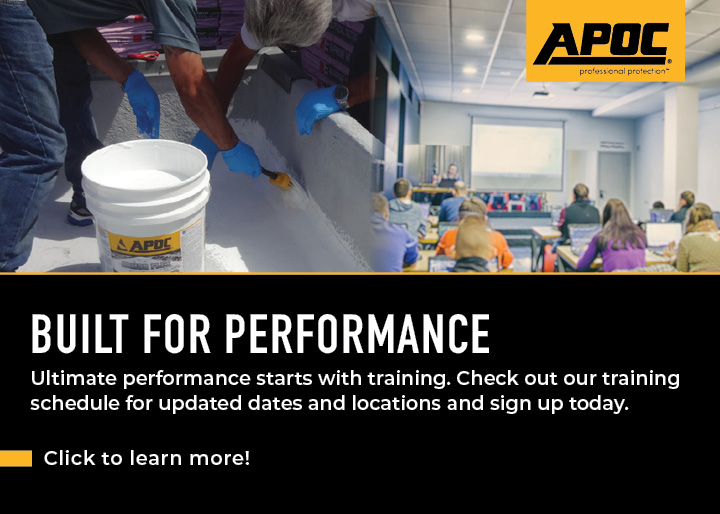




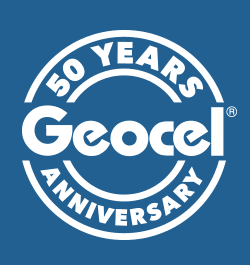

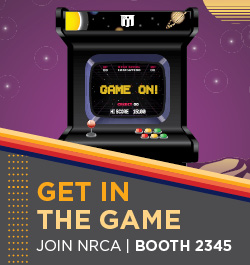
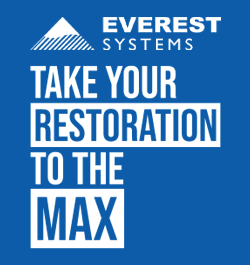

Comments
Leave a Reply
Have an account? Login to leave a comment!
Sign In